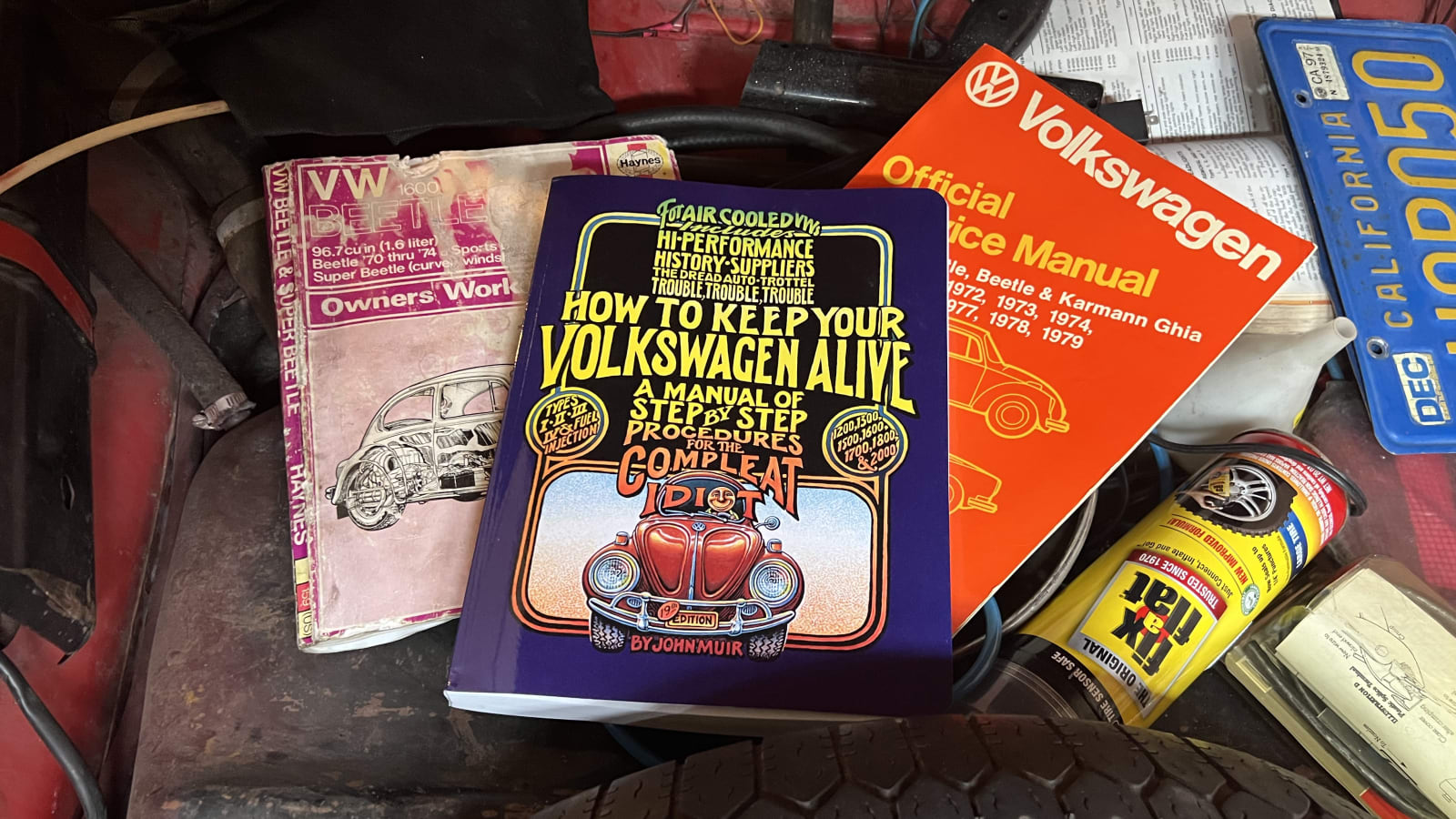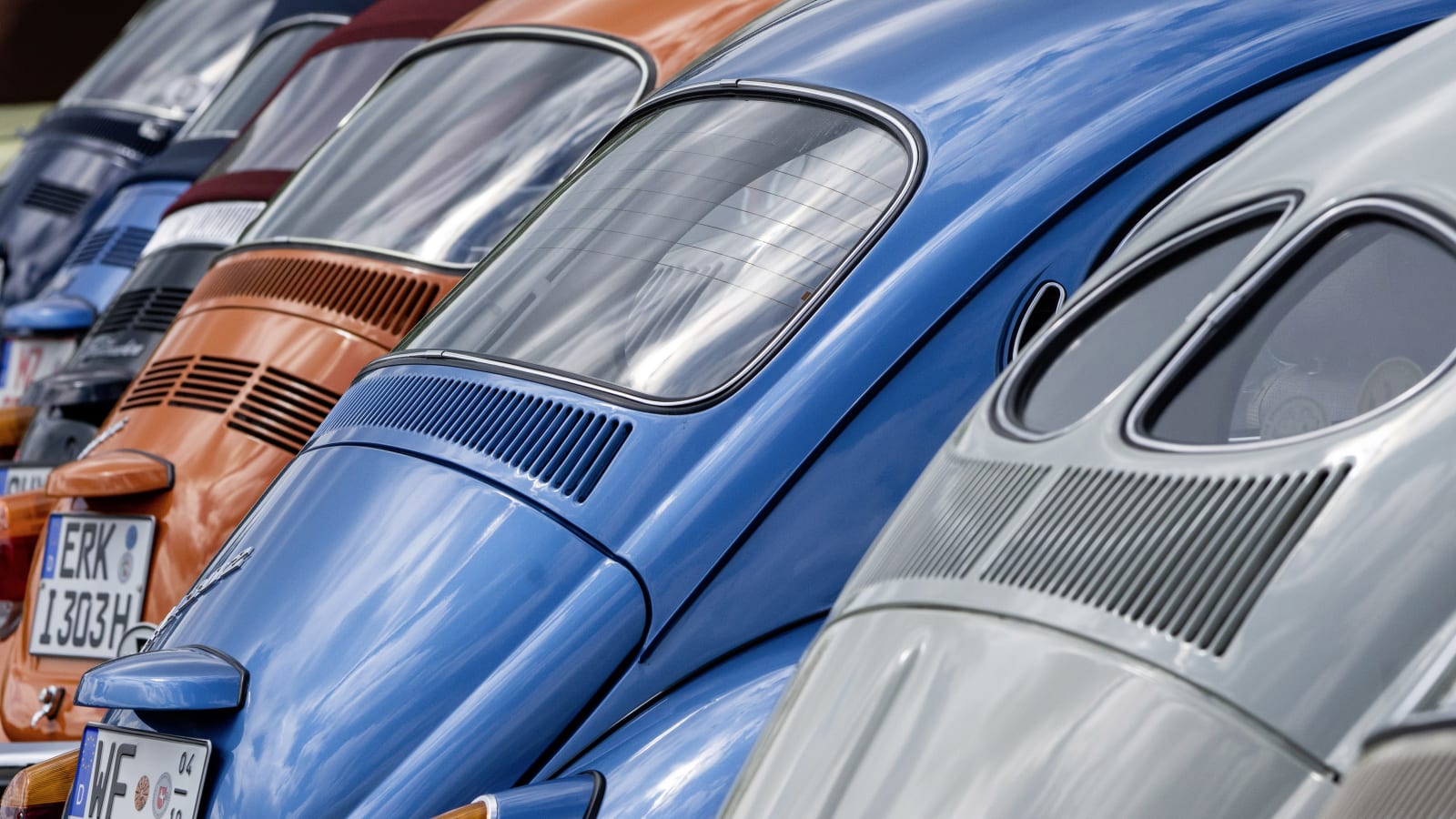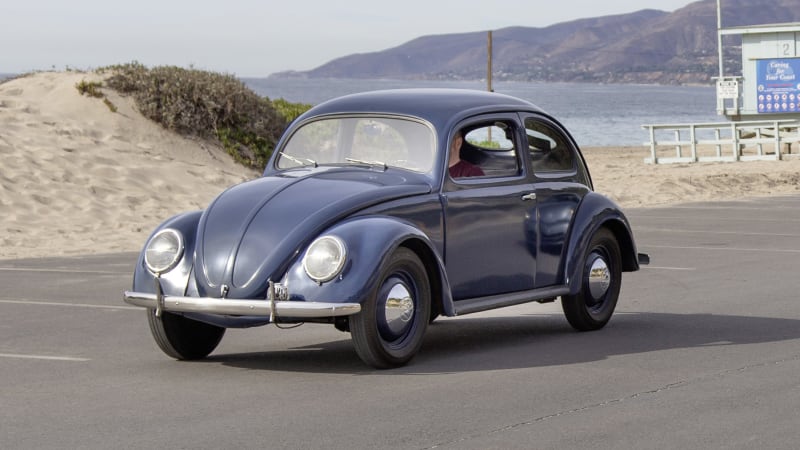The Volkswagen Beetle — also known as the Volkswagen Type 1, or VW Bug, Käfer, Vocho, Fusca, Cocinelle, Maggiolino, Punch Buggy or some other countless variation depending on where and when you have lived — is one of the most popular vehicles of all time. This first generation was produced in various forms from 1938 until 2003 in markets around the world, and sold in the U.S. from 1950 to 1979. It arose from a historically dubious beginning, wherein Adolf Hitler commissioned a “People’s Car” from Porsche founder and engineer Ferdinand Porsche in order to provide working-class Germans an affordable vehicle and the subsequent freedom to travel the country on the newly built Reichsautobahn highway network. Of course, priorities and capabilities shifted during World War II, but mass production began in earnest in the late 1940s, and the car took off from there despite its nascent connections to Nazi Germany.
Originally called the Volkswagen Type 1, this bubble on wheels earned the nickname Käfer, or Beetle, and was later marketed under the name we know and love now. This air-cooled, rear-engined, rear-wheel-drive compact car became the basis for other Volkswagen vehicles like the Type 2 Transporter/Bus/Microbus and the Karmann Ghia.
In 1997, while cars were still being built on the original platform in some parts of the world, Volkswagen introduced a disappointing New Beetle and, in 2011, launched another generation of Beetle, based on the Jetta platform, that better lived up to enthusiast expectations and nostalgic tastes (Autoblog News Editor Joel Stocksdale even owns a 2013 VW Beetle that he adores, and he had the opportunity to compare with a Type 1 model that was half a century its senior).
Now long retired from production, the Type 1 Beetle still enjoys a huge fan following, with many versions from many different years regularly swapping hands and garages.
Why the VW Beetle?
There are some good reasons to pick up one of these admittedly very antiquated cars. For one, it’s a true classic. It’s a car that many of us grew up adoring, whether a relative owned one, or we were fans of the Herbie (AKA “The Love Bug”) movies produced from the 1960s all the way up until 2005, or were fascinated by the car’s association with hippie culture. Many more of us have fond memories of slugging our siblings in the arm upon spotting one on the road. It’s a car that just makes you feel something, or remember something.
Second, there’s a huge enthusiast community surrounding the Beetle. That’s partly because they’re so cool, and partly because so many were made. As such, there are a lot of resources for owners, and plenty of original and aftermarket parts to be found. There are loads of shops and mechanics who specialize in old Volkswagens (and, often by extension, old Porsches). There are forums full of information at the ready, as well as local car clubs with owners willing to share their wisdom — and maybe even their tools. Despite Volkswagen having made countless incremental changes to the Bug over its many years, there’s probably a YouTube video or forum topic dedicated to whatever question you might have about your specific vehicle.
Third, they’re great cars to wrench on. And, if you buy one, wrench on it you will. Yes, they require a lot of maintenance and TLC, and have their share of idiosyncratic issues that arise, but their mechanical simplicity and the aforementioned wealth of resources at your fingertips make them great project cars for beginners and experts alike. If you’re stumped, it’s not hard to find a solution through research, sheer determination or, at the worst, just finding a knowledgeable mechanic to get you past whatever your particular roadblock may be.

Compared to a lot of classic cars, they’re not terribly expensive. Sure, you can spend big bucks on a meticulously restored or maintained Bug, but if you’re not too picky, and willing to get some grease under your fingernails, you can pick up a roadworthy project car for around $6,000, and your options expand enormously in the $8,000 to $10,000 range.
Finally, they’re damned fun to drive. You’d be surprised at the sort of smile 50 horsepower can put on your face — as well as those of pretty much everyone you pass by (though, let’s be honest, you’re the one who’s going to be getting passed). Beetles are simply charming through and through. From their shape to their hard-working, little air-cooled motors to their unique weight distribution and subsequent handling, you’re making the most of the thing — especially the throttle — every time you drive it. And those times that you see someone slug the person next to them as you drive by make the whole thing worth it.
Oh, it also smells good in your garage.
Our used vehicle listings can be helpful to find a good deal near you. Narrow the offerings down by a radius around your ZIP code.

Which VW Beetle to choose?
There are a few things that set Beetles apart, the year they were made being the most obvious. Maybe you don’t care, so long as it’s in a certain condition and price range, but despite few major changes over its lifecycle, there were plenty of smaller changes made. The motor was updated multiple times, always a horizontally opposed four-cylinder, but displacement grew incrementally from 1,100 cubic centimeters (1.1 liters) up to 1,600 cc over the years, with power subsequently increasing from 25 horsepower up to 60 hp. Things like fuel injection, carburetors, transmissions, window shape and size, lighting style and placement, bumpers, suspension setup and countless other details changed from year to year. If there’s some specific feature you especially want, look up the years the car included it, and start there. Of course, you could always just make some of the modifications, like swapping an engine, yourself after you buy the vehicle. You also probably want to know what sort of modifications the previous owner(s) made.
The other thing to consider is, do you want a standard Beetle, a Super Beetle or a Cabriolet (convertible)? The Super Beetle was built alongside the standard Beetle that had been produced for years, beginning in 1971. The biggest differences were that the Super was slightly longer, had a larger trunk up front and came with a MacPherson front suspension. A convertible version of the standard Bug became available starting in 1949, and when the Super Beetle came around, that was the only version you could get as a convertible.
What else to consider?
If a Beetle’s what you want, a Beetle’s what you should get. That said, the Chevy Corvair tickled some of that same air-cooled, rear-engined, rear-wheel-drive, budget-car itch. Other possibilities include the Bug-related VW Karmann Ghia, or even the Fiat 500 or Citroën 2CV, all of which are harder to find — especially in the U.S. — and more expensive.
Source: www.autoblog.com



